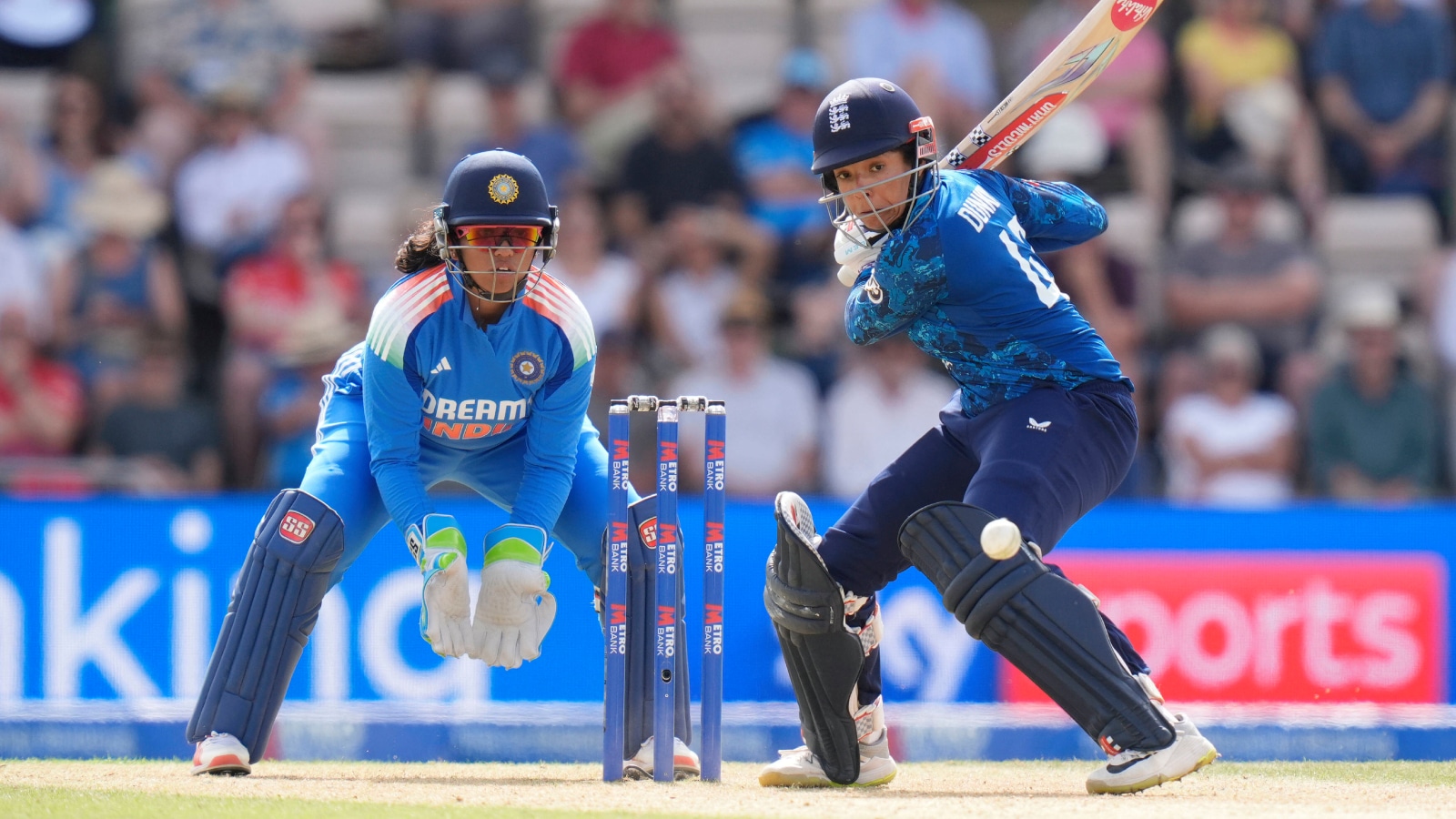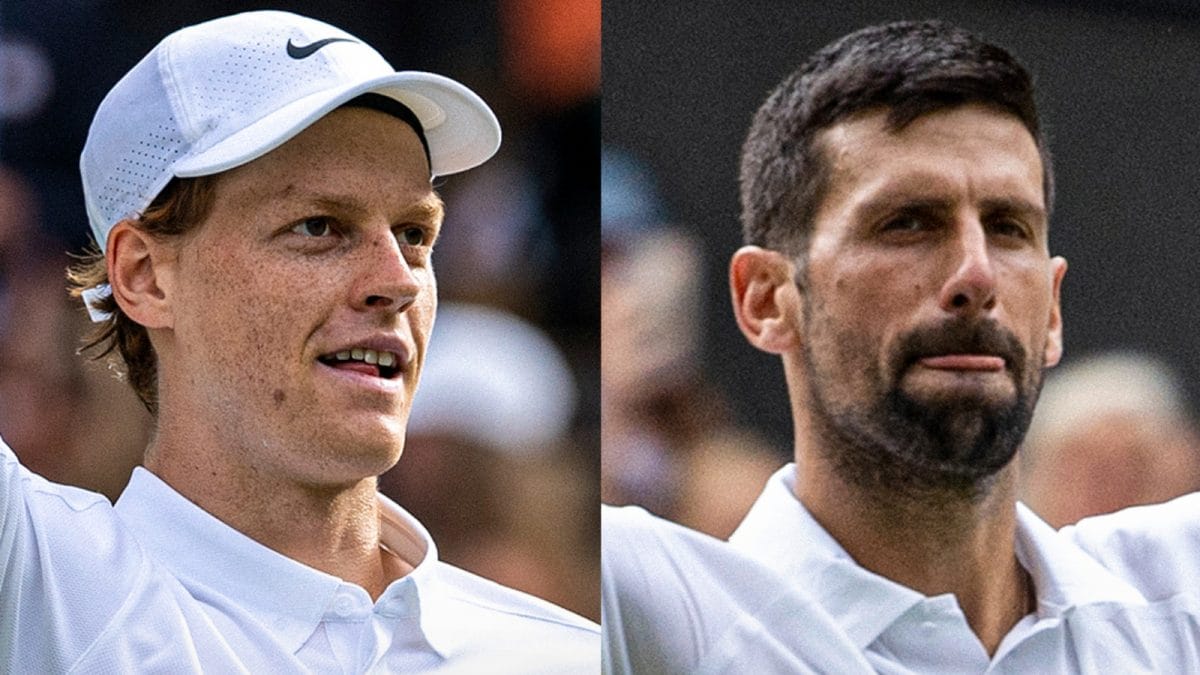ARTICLE AD BOX
After 21 months on the sidelines post a left-knee surgery for a ruptured patellar tendon, Sreeshankar Murali returned at the Indian Open in Pune last week. A fifth-round jump of 8.05 metres made it a special comeback. He was mildly fretful but wasn’t a bundle of nerves.
“Initially, I was a bit anxious about how it would go because I hadn’t competed in a while. At the same time I was very calm and composed because I knew I had done it before,” Sreeshankar, a Commonwealth Games and Asian Games silver medallist, told The Indian Express.
He entertained thoughts of a 8.20 metre jump. First jump, 7.84 metres, the second, 7.99 metres. “I took the first jump far behind the board, so I was like ok ‘probably I have an 8-metre plus jump today’. The second jump my toe just touched the board and I did 7.99. But dad (S Murali, his coach) said don’t push too much. As long as we get the 8-metre figure we are more than happy. There was a headwind too.”
Sreeshankar is used to overcoming adverse conditions.
The 26-year-old casts his mind back to April last year when his Paris Olympics dream went up in smoke. The doctor’s diagnosis put a question mark over his future as a long jumper. The patellar tendon connecting the kneecap to the top of the shin bone had ruptured and a part of the bone had chipped off. This was more severe than a ‘jumpers’ knee’, which is characterised by inflammation of the patellar tendon.
“The tendon getting inflamed is very common with athletes but the tendon getting ruptured is rare. The doctors told me that this injury you get when you have a high-impact car crash or if you fall from the top of a building or someone forcefully beats your leg and pulls your legs apart. This type of injury can only be expected in near-death situations,” Sreeshankar said.
His patellar tendon ruptured following a ‘small jump’ during practice at his earlier training base in Palghat, Kerala. The out-of-the-blue injury shocked Sreeshankar, though he experienced an inflammation of the tendon in 2023.
 Sreeshankar Murali training during his rehab phase at the Inspire Institute of Sport gym. (Special arrangement)
Sreeshankar Murali training during his rehab phase at the Inspire Institute of Sport gym. (Special arrangement)
Sreeshankar calls the knee and the tendon like the ‘bread and butter’ for a long jumper. He initially consulted a high-profile doctor in India but the 18-month timeline to start light jogging again and no guarantee of being fit for the 2026 Asian Games made Sreeshankar take a second opinion.
Story continues below this ad
“I was devastated. Just two days back I was aiming for an Olympic medal and then you hear that your career is almost finished,” Sreeshankar recalled the emotions he went through.
That’s when Samuel A Pullinger, the head of performance science at the Inspire Institute of Sport (IIS) in Bellary, advised him to look at experts in the middle east. The Aspetar Hospital in Doha, renowned for orthopedic expertise and sports medicine, where Brazilian football star Neymar underwent an ankle surgery was Sreeshankar’s next stop. Dr Bruno Olory at Aspetar Hospital was confident of Sreeshankar being able to start training in six months.
“The way the surgeon in Doha explained the surgery procedure, I was convinced as compared to what I heard in India. A graft was taken from my hamstring to tighten the tendon. The rehab started immediately and I started walking on crutches. Dr Olory told me that he has seen such cases with football players and probably rugby players who have collision and rupture tendons. He told me recovery depends on how the body responds and how the rehab is done. To have a protocol on how to move forward with recovery and rehab after a patellar tendon rupture was difficult because there was hardly any literature available,” Sreeshankar said.
Even before the surgery, the long jumper and Priyam Singh, a sports physio at IIS, charted a rehab roadmap for a year.
Story continues below this ad
Like learning ABC again
“First two or three months were about bending the knee, initially to 30 degrees, reducing the swelling, strengthening the other parts of the body like calf muscles. Without involving the knee, I was able to do other things. I had a knee brace that was locked and in that position I was doing core workout and upper body training. After six months, in October, I was back on the track, doing easy drills and light running. It was like learning ABC again, learning to be an athlete again,” Sreeshankar said.
Post surgery, his left knee has become bigger and the position of the knee cap has changed. “The doctor said there will be mechanical changes and you can’t expect everything to be 100 percent like before.”
The game-changer, according to Sreeshankar, was when he consulted Wayne Lombard, a well-known strength and conditioning coach, who has worked with stars like Neeraj Chopra, Vinesh Phogat and Tejaswin Shankar and India’s women’s hockey team.
“Wayne trained my knee like how it should be trained for a jumper, it was very sports specific. Tejaswin asked me to get in touch with him. Wayne revamped the strength and conditioning schedule along with Priyam. That changed the game. By the end of February, I took a three-step long jump. I used to do exercises like it was a medicine, like a diabetes patient takes insulin everyday. This is like a new baby knee and I have to take care of it very well.”
Story continues below this ad
There is an upside of Sreeshankar having time on hand during his rehabilitation. He’s become a certified strength and conditioning coach. “I wanted to get myself occupied with something productive to keep my mind from only thinking about my knee. I had done the course in the 2023 off season but was yet to finish the workbook as I didn’t find time because I was preparing for the Olympics. During the rehab, I completed it and I have a coaching licence now.”



.png)
.png)
.png)


























 English (US) ·
English (US) ·